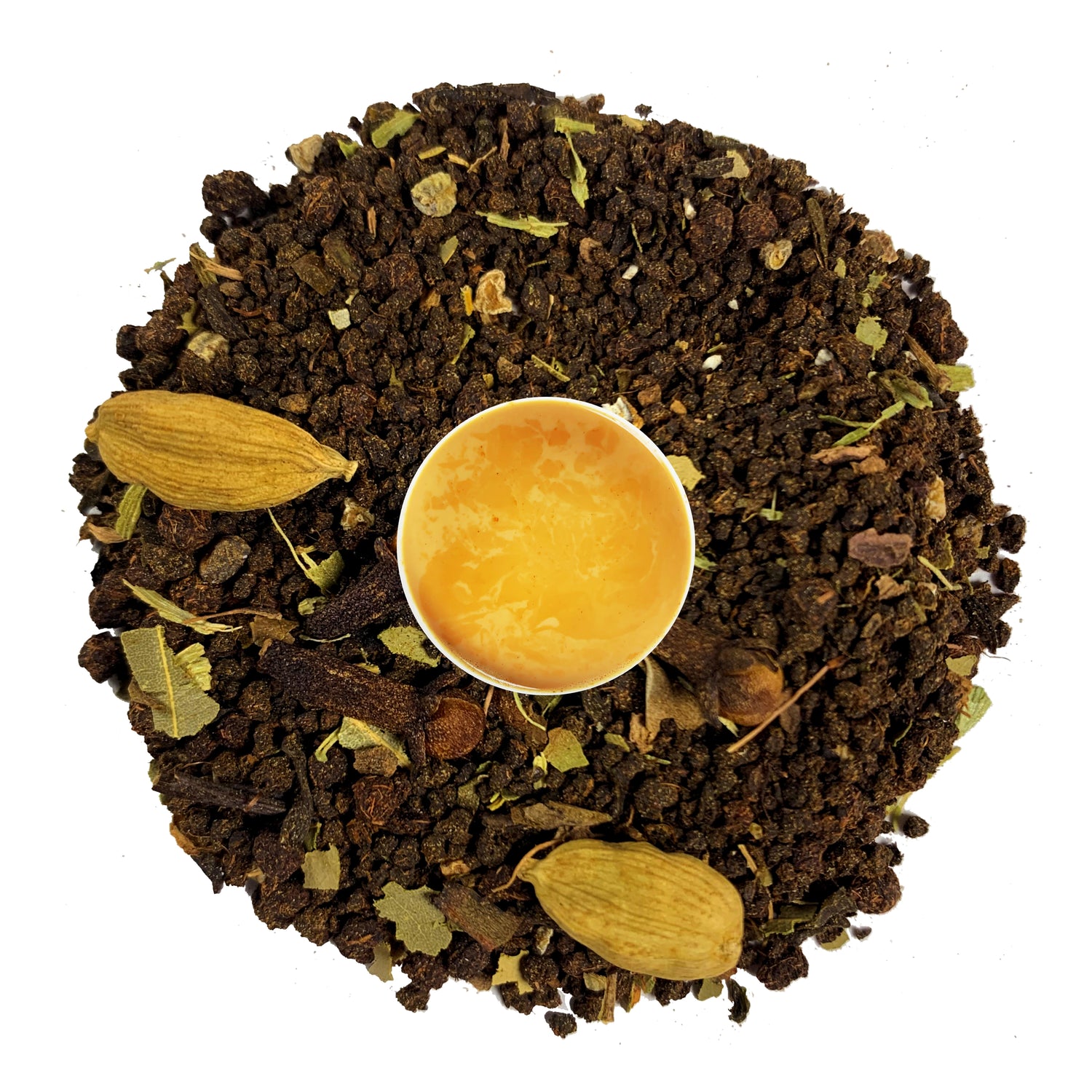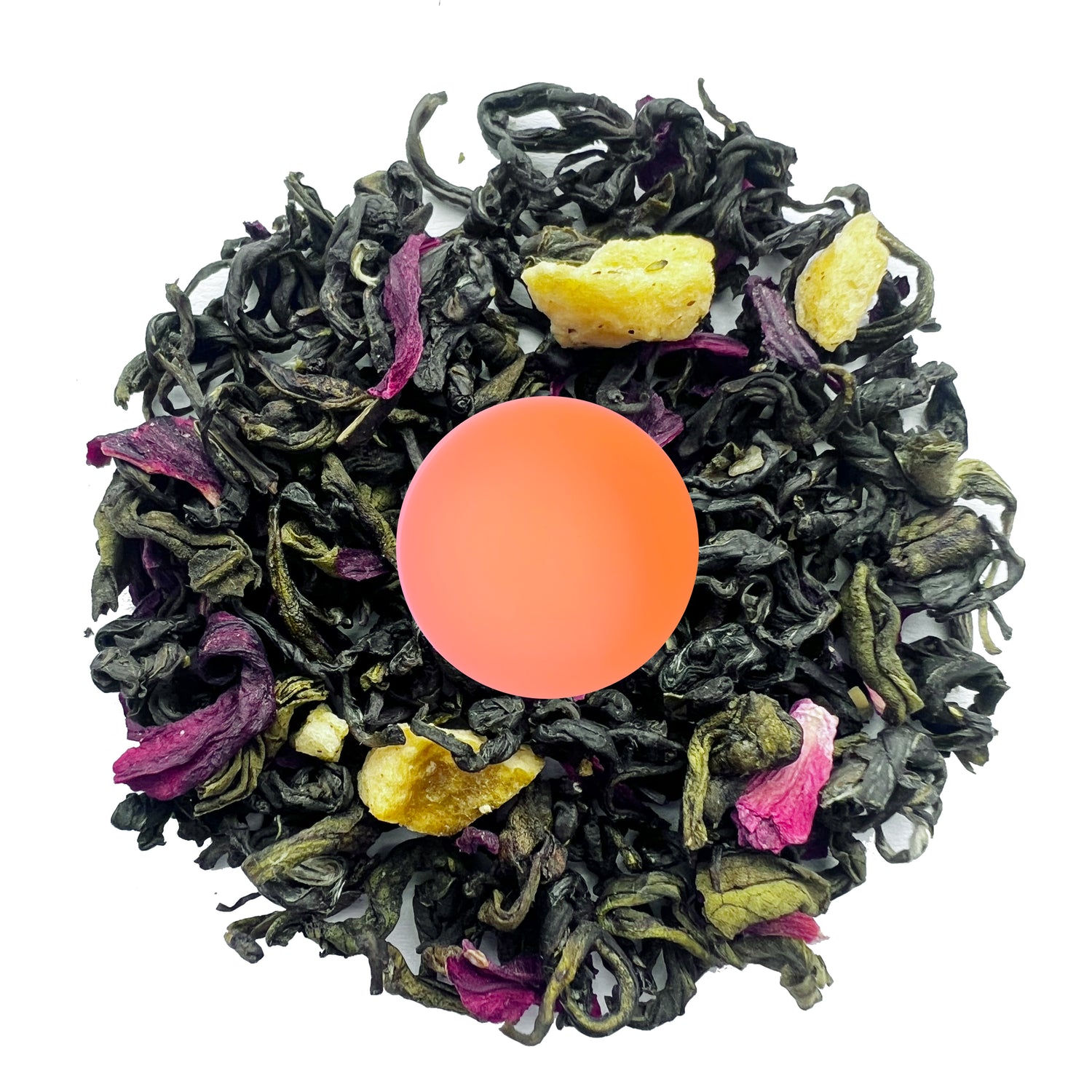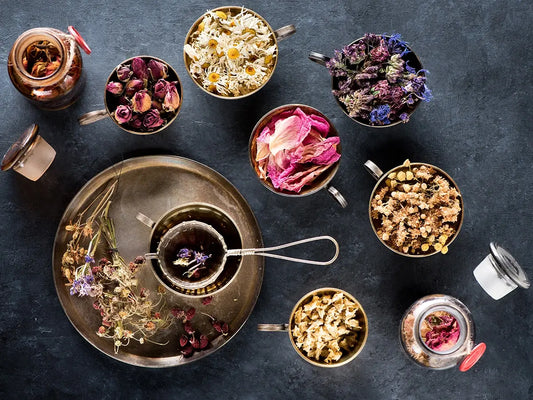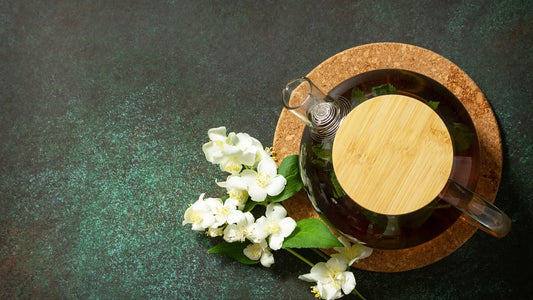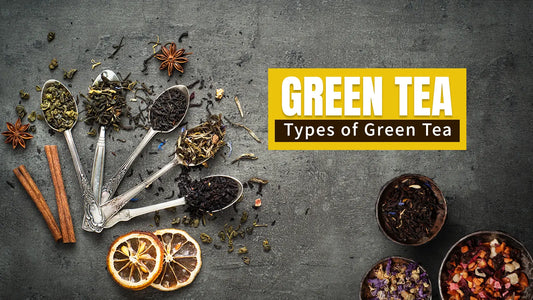Pu-Erh Tea: Everything You Need to Know
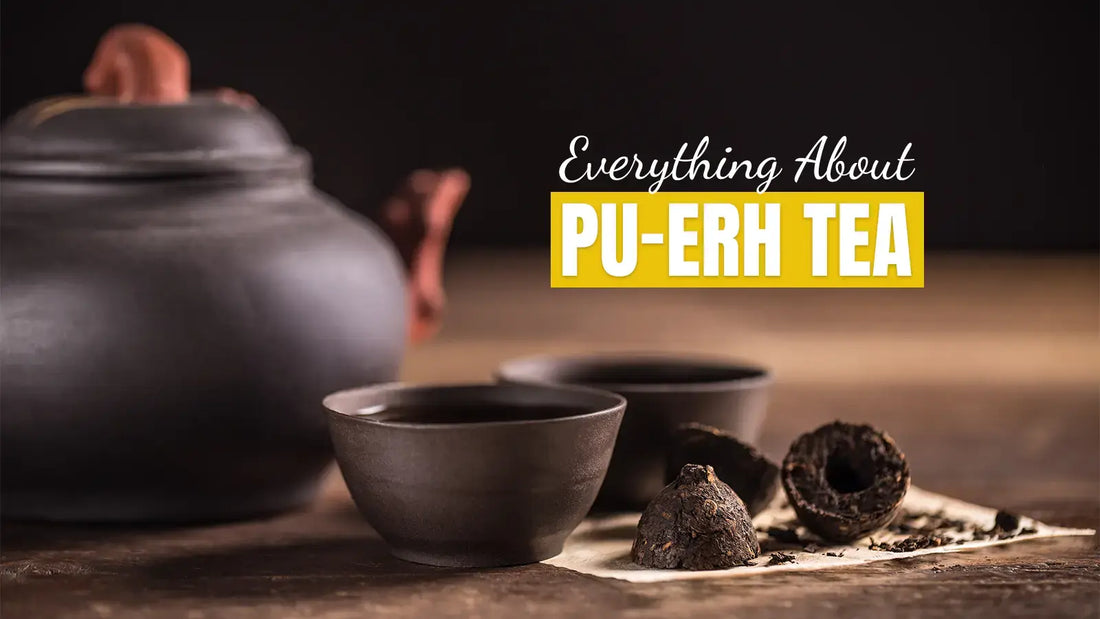
Did you know Pu-erh tea can improve with age just like fine wine?
That’s right–some pu-erh tea cakes can be aged for more than 50 years and still cherished for their rich flavor. It is a rare and special kind of fermented tea appreciated for its unique taste and possible health advantages.
So, today, let's explore the world of pu-erh tea and discover what makes it so special.
What is pu-erh tea?
Pu-erh tea is a special kind of fermented tea derived from the Camellia Sinensis var. Assamica plant. This tea is processed differently than others and has a unique appearance. It comes in loose leaf or the compressed cake form.
You may find two types of pu-erh tea that are raw and ripened. Raw pu-erh tea or Sheng is processed minimally just by sun drying the leaves. But, ripened pu-erh tea is further processed fermenting that supports the aging process.
History of Pu-erh Tea
Did you know that pu-erh tea was formerly known as Yunnan tea?
The history of this beverage dates way back to 1000 years ago. Originating from the Yunnan of China, this tea was dried in the sun and consumed as it. Later, the tea was fermented to avoid spoilage during the trip, and discovered that the tea got better with age. Today, Pu-erh tea holds a significant role in Chinese culture and it’s widely consumed worldwide.
What does pu-erh tea taste like?
Pu-erh tea has a very complex taste profile that varies with its processing. It offers a rich and thick feel with a lingering sweetness.
Young raw pu-erh tea has a grassy, vegetal, and fresh taste whereas aged raw pu-erh is deeper, earthy, and woodsy. Similarly, the ripened ones give off an earthy, musty, damp flavor with a smooth texture.

Pu-Erh Tea Properties
Pu-erh tea is also packed with abundant nutrients that may provide potential health benefits. According to research, you may find the given compounds in the Pu-erh tea.
- L-theanine
- Glutamine
- Histidine
- Magnesium
- Iron
- Carbohydrates
- Flavonoids and phenolic acids
- Caffeine
- Theobromine
Pu-erh Tea Caffeine
Although scientific researches have mentioned that the pu-erh tea has caffeine, there’s no clear number. The caffeine content in pu-erh tea depends on the age, leaf type, and brewing method. Aged pu-erh tea tends to have less caffeine than the younger ones.
On average, you may find 15 to 60 mg of caffeine in pu-erh tea in an 8 fl oz cup.

How to brew pu-erh tea?
One of the most asked questions over the internet is “How to drink pu-erh tea?”
Since it's an exclusive tea, it can feel a bit daunting and intimidating to beginners, at first. That’s why to help you out, we have compiled the simple instructions on brewing pu-erh tea in a traditional way.
And here’s the best part: unlike other teas, pu-erh tea does not require a longer steeping time. Your tea will be ready in just 30 seconds with hot water. Sounds amazing, right? Let’s get started and brew it.
You’ll Need
- A gaiwan
- A teacup
- Hot water of 210°F
- 2 teaspoons of loose-leaf pu erh tea or pu erh tea cake
- Empty container
Instructions
- Firstly, pour boiling water into Gaiwan, swirl it, and discard it in an empty container to warm it.
- Now, pour hot water into the teacup and do the same. Swirl and discard to warm it.
- Put the loose leaf or pu-erh tea cake into the gaiwan.
- Pour hot water over the tea and decant the rinse into an empty container.
- Finally, pour hot water into the gaiwan. Close the lid and wait for around 15-30 seconds.
- Pour the brew into your teacup.
- You may infuse it multiple times and enjoy it. Just ensure to limit the steeping time to 30 seconds.
Pu-erh Tea Benefits
Above we learned that pu-erh tea consists of several nutrients. Now, let’s discuss their potential health benefits in more detail.
May Help with Weight Loss
Due to the rich polyphenol compound in the Pu-erh tea, it may contribute to weight loss by boosting fat metabolism. This tea may also help in suppressing the fatty acid synthesis that could result in the reduction of body weight.
Might Improve Gut Health
The probiotics compound present in the pu-erh tea may support maintaining gut health. In a study with mice, it was seen that the pu-erh tea extract significantly raised the healthy bacteria. Moreover, its anti-inflammatory properties could also help in reducing gut inflammation.
May Soothe Digestive Issue
As pu-erh tea consists of anti-inflammatory and antioxidant properties, it may help in soothing digestive issues.
Could Boost Mental Alertness
As there’s caffeine present in the Pu-erh tea, it may have the ability to boost mental alertness. Similarly, this beverage contains gamma-aminobutyric acid that is recognized for its calming effect. Drinking pu-erh tea regularly could be beneficial in improving concentration.
Raw Pu-erh Tea Vs Ripened Pu-erh Tea
The major difference between the raw pu-erh and ripened pu-erh is the processing method. Let’s dive into more details below.
|
Basis of Difference
|
Raw Pu-erh Tea
|
Ripened Pu-erh Tea
|
|
Appearance
|
Raw pu-erh tea has a lighter appearance. When you brew it, it gives off a coppery gold color.
|
Ripened pu-erh tea comes mostly in brick form. It has darker tea leaves and color when brewed.
|
|
Processing
|
Just like the green tea, raw pu-erh tea is harvested and simply dried in the sun.
|
Ripened pu-erh tea includes extra processing that is cooking or fermenting.
|
|
Flavor
|
Its taste profile ranges from lighter to darker and mellower.
|
The flavor profile is richer and smoother with dark color.
|
Pu-erh Tea vs Black Tea
While both teas are from the same plant, pu-erh tea and black tea are two different types having a separate flavor profile, health benefits, processing, etc. Here are the differences between them.
Processing
Pu-erh teas are fermented during the processing and offer a unique flavor. You may find it in raw or ripe form.
On the other hand, black teas undergo a complete oxidation process, offering a more robust and rich flavor profile.
Flavor Profile
While pu-erh tea has a very earthy and smooth flavor, black tea has a more bold and robust taste.
Caffeine
There’s caffeine in both types of tea. However, black tea has slightly more caffeine than pu-erh tea.
Cost
As pu-erh tea has complicated processing, it's more expensive. On the other hand, black tea is easily available and cheaper than pu-erh tea. Having said that, it also depends on the quality of the black tea.

FAQs for Pu-erh Tea
How to break a pu-erh cake?
First, find a softer area on the back of the tea cake. Take a tea needle, carefully insert it, and create 3 separate holes relatively close to each other. Slightly wiggle and pry up the cake to separate it into a piece. Repeat the process if you need more.
What is pu-erh tea good for?
Pu-erh tea could be potentially good for numerous health benefits. It may be helpful in supporting weight management, enhancing mental awareness, boosting gut health, relieving digestive issues, etc.
Is pu-erh a black tea?
No pu-erh tea is not black tea. While it may look like black tea due to its fermented process, pu-erh is a different kind of tea.

Conclusion
If you’re a tea enthusiast looking for high-quality loose-leaf teas, look no further than Danfe Tea. From organic certified teas, soothing herbal teas, and flavorful true teas, to aromatic blended teas, each cup promises to heighten your tea journey.
Not sure where to begin? You may start with our best-selling favorites that have won the hearts of our customers – Yak Mountain Loose Leaf Chai Tea, Rose Black Tea, Lemongrass Tea, Nepal Jasmine Green Tea, and Tulsi Tea (Sacred Basil Tea). Buy today and treat yourself to a taste of excellence!



